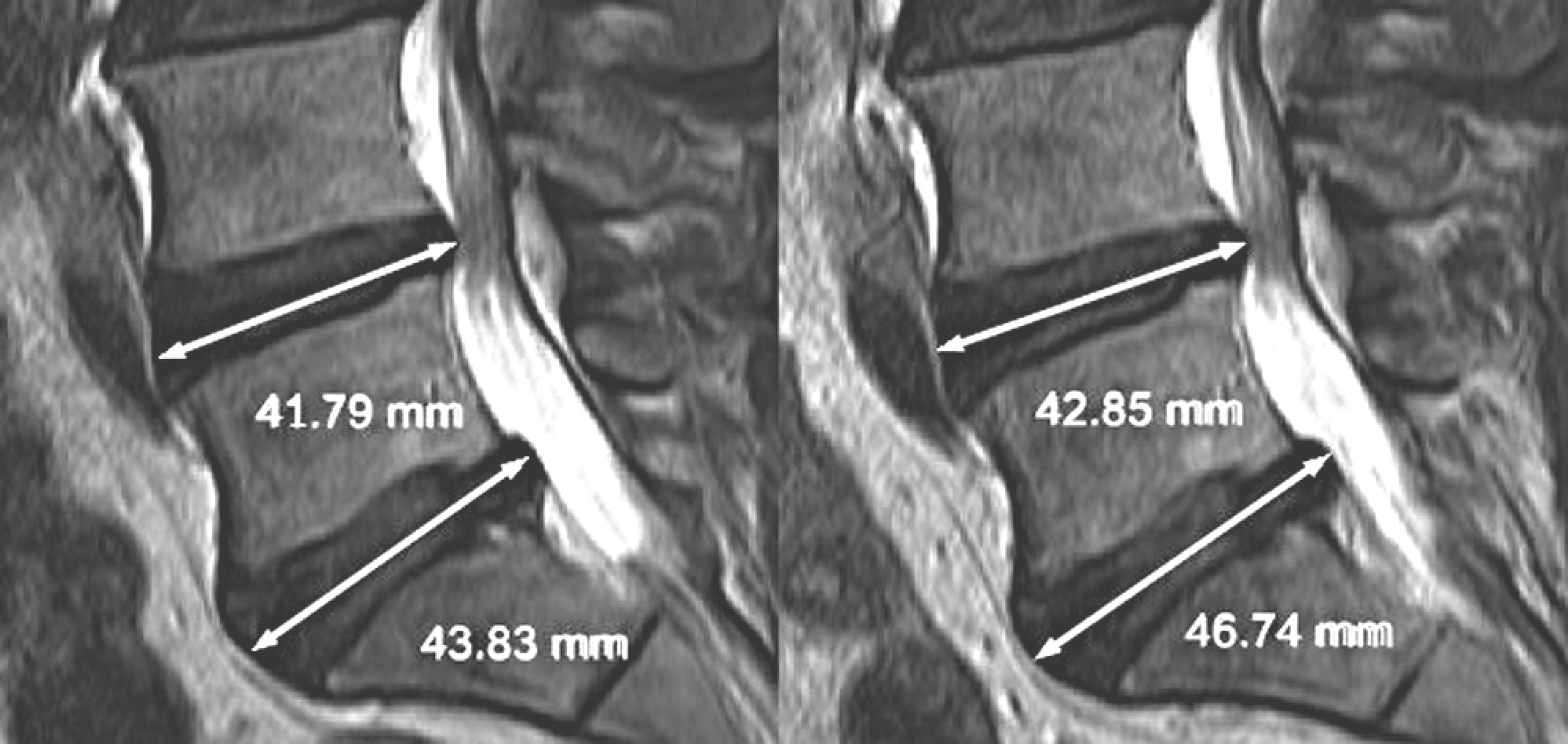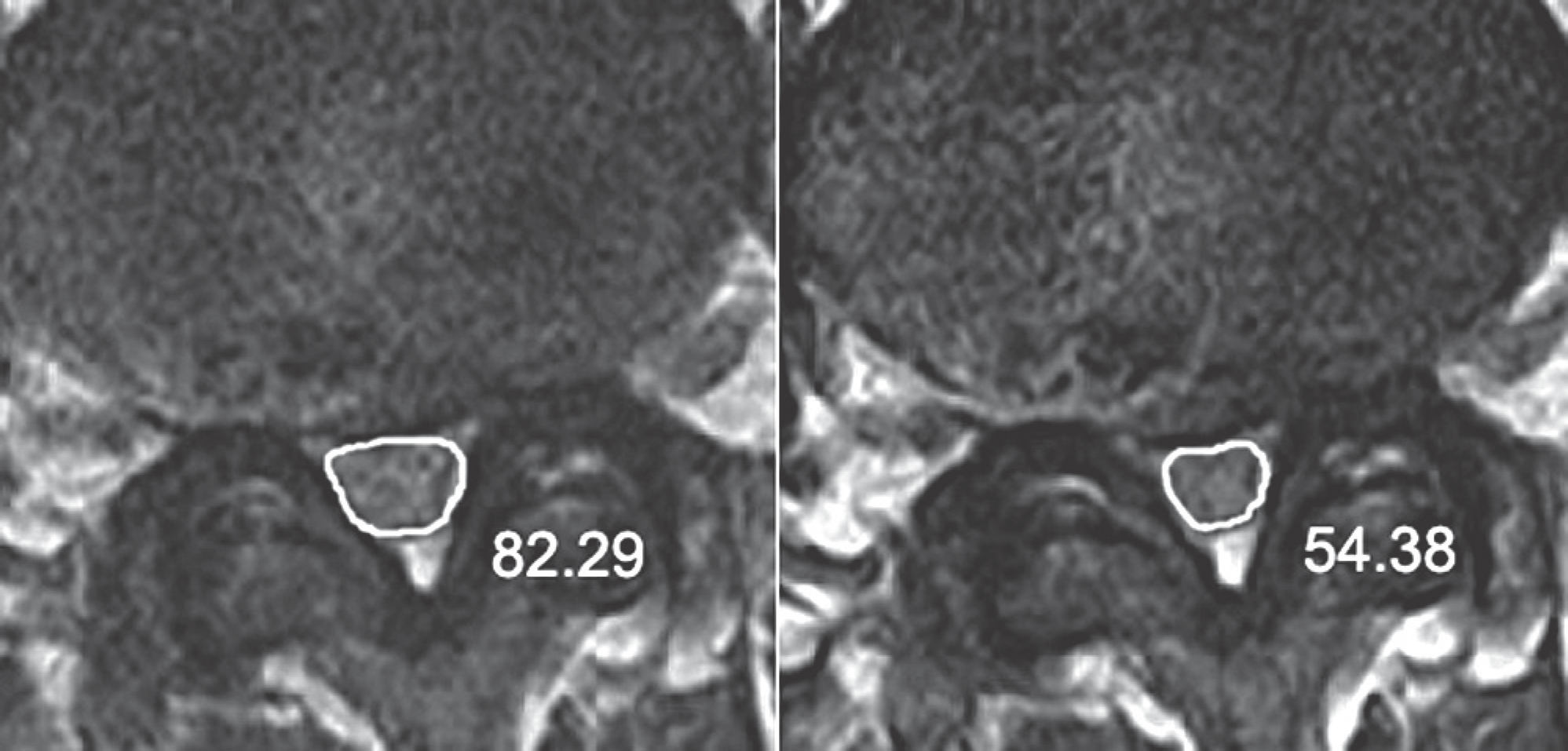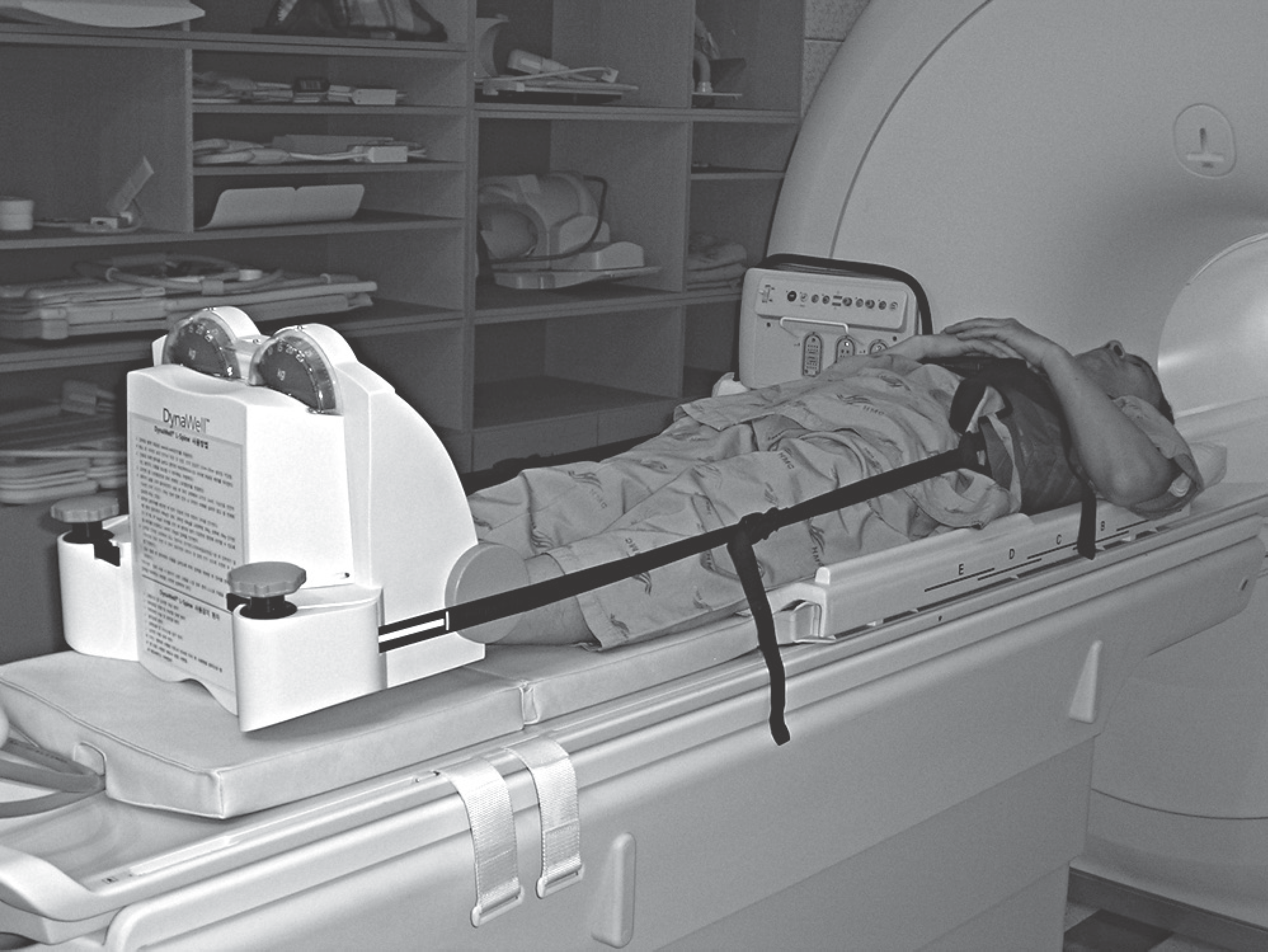Abstract
Study Design
This study intended to find out differences of effects by axial loading in MRI examination in a patient group with neurologic claudication and a group without neurologic claudication
Objectives
It was intended to understand in which group the effects of axial loading can be expected when taking MRI on the lumbar spine.
Summary of Literature Review
The study of Willen and Danielson found spinal canal stenosis, which cannot be found by existing methods comparing an MRI taken in bended posture of lumbar without axial loading implementation by MRI taken with axial loading implementation. Hiwatashi et al. also reported that there was a change of treatment direction by laminectomy after axial loading in patients who were intended to take a conservational treatment before the axial loading.
Materials and Methods
A total of 39 patients and 54 intervertebral discs were compared. The distances from a sagittal plane before and after intervertebral discs were compared by measuring a sectional area of dura mater in a horizontal plane image and two groups were compared by existence of patients’ neurologic claudication.
Results
The AP diameter before and after a intervertebral discs increased into 41.98 mm from 41.1 mm on the average and the sectional area of dura mater showed 137.47mm2 before loading and 119.86mm2 after loading on the average. There was not a significant difference in the distances before and after axial loading implementation, but a significant difference was found in the sectional area of dura mater.
Go to : 
REFERENCES
2.Amundsen T., Weber H., Lilleas F., Nordal HJ., Abdelnoor M., Magnaes B. Lumbar spinal stenosis. Clincal and radiological features. Spine (Phila Pa 1976). 1995. 20:1178–86.
3.Bolender NF., Schö nströ m NS., Spengler DM. Role of computed tomography and myelography in the diagnosis of centreal spinal stenosis. J Bone Joint Surg Am. 1985. 67:240–6.
4.Botwin KP., Gruber RD. Lumbar spinal stenosis: anat-omy and pathogenesis. Phys Med Rehabil Clin N Am. 2003. 14:1–15.

5.Alyas F., Connell D., Saifuddin A. Upright positional MRI of the lumbar spine. Clin Radiol. 2008. 63:1035–48.

6.Jinkins JR., Dworkin JS., Damadian RV. Upright, Weight-bearing, dynamic-kinetic MRI of the spine: initial results. Eur Radiol. 2005. 15:1815–25.

7.Muhle C., Wiskirchen J., Weinert D, et al. Biomechanical as-pects of the subarachnoid space and cervical cord in healthy individuals examined with kinematic magnetic resonance imaging. Spine (Phila Pa 1976). 1998. 23:556–67.

8.Penning L., Wilmink JT. Biomechanics of the lumbosacral dural sac. A study of flexion-extension myelography. Spine (Phila Pa 1976). 1981. 6:398–408.
9.Willé n J., Danielson B. The diagnostic effect from axial loading of the lumbar spine during computed tomography and magnetic resonance imaging in patients with degenerative disorders. Spine (Phila Pa 1976). 2001. 26:2607–14.
10.Hiwatashi A., Danielson B., Moritani T, et al. Axial loading during MR imaging can influence treatment decision for symptomatic spinal stenosis. AJNR Am J Neuroradiol. 2004. 25:170–4.
11.Kalichman L., Guermazi A., Li L., Hunter DJ. Asso-ciation between age, sex, BMI and CT-evaluated spinal degeneration features. J Back Musculoskelet Rehabil. 2009. 22(4):189–95.

12.Madsen R., Jensen TS., Pope M., Sørensen JS., Bendix T. The effect of body position and axial load on spinal canal mor-phology: an MRI study of central spinal stenosis. Spine (Phila Pa 1976). 2008. 33:61–7.
13.Porter RW., Ward D. Cauda equine dysfunction. The sig-nificance of two-level pathology. Spine (Phila Pa 1976). 1992. 17:9–15.
Go to : 
 | Fig. 2.Preloading and postloading sagittal view of 51years old male patient, it shows increase of AP diameter after axial loading. |
 | Fig. 3.Preloading and postloading axial view of 51 years old male patient, it shows sectional area of dura mater decrease after axial loading. |
Table 1.
Descriptions of patient




 PDF
PDF ePub
ePub Citation
Citation Print
Print



 XML Download
XML Download